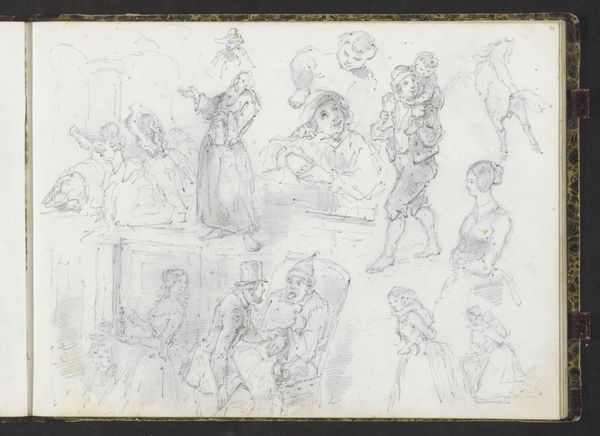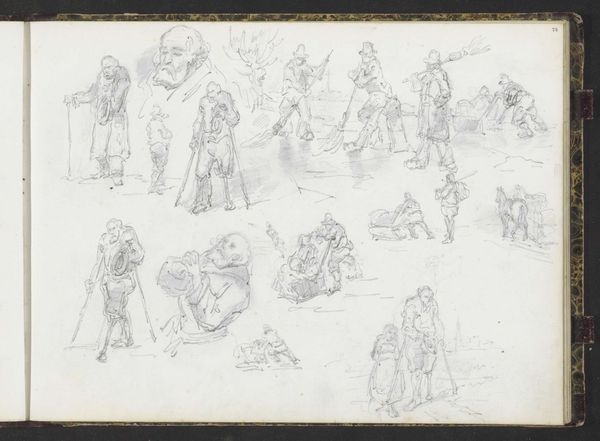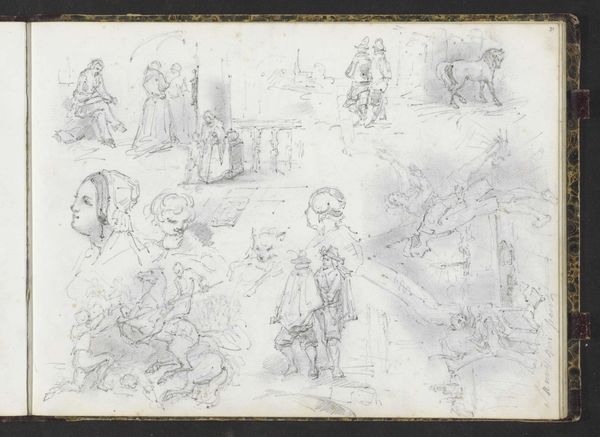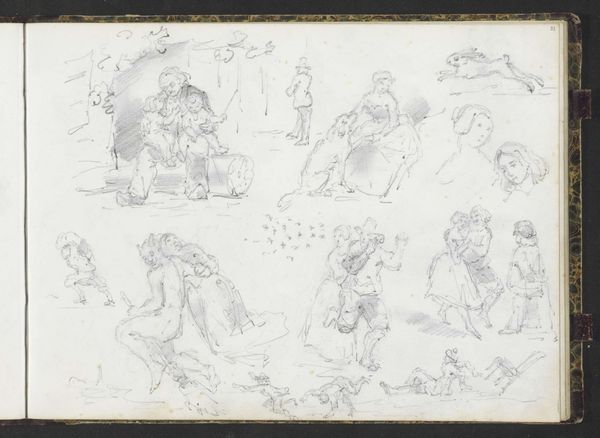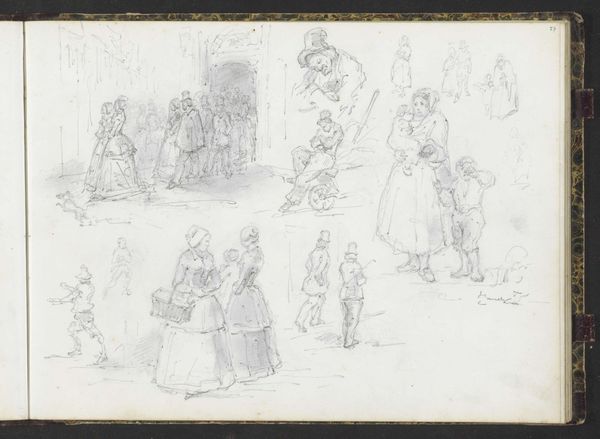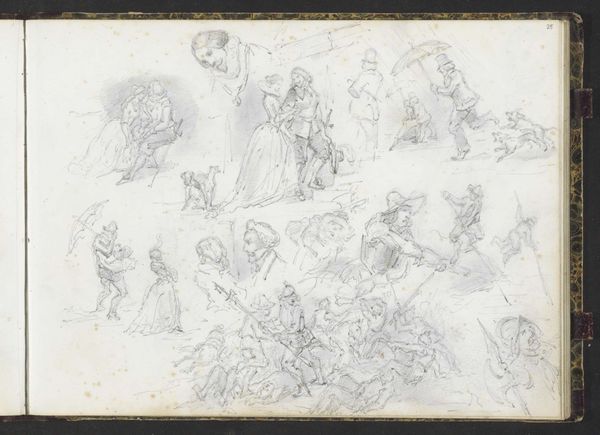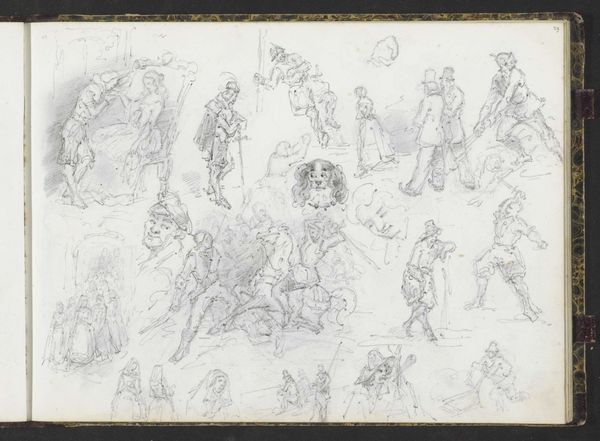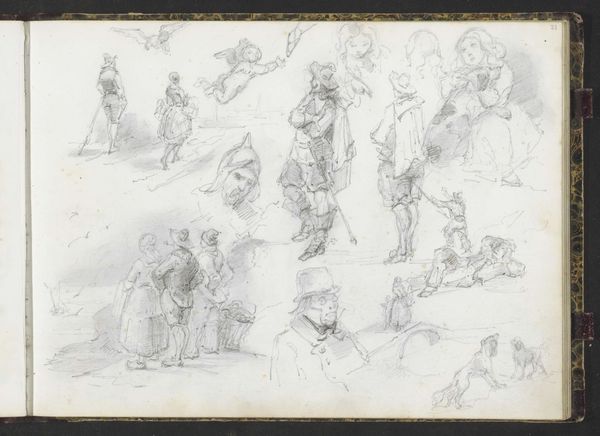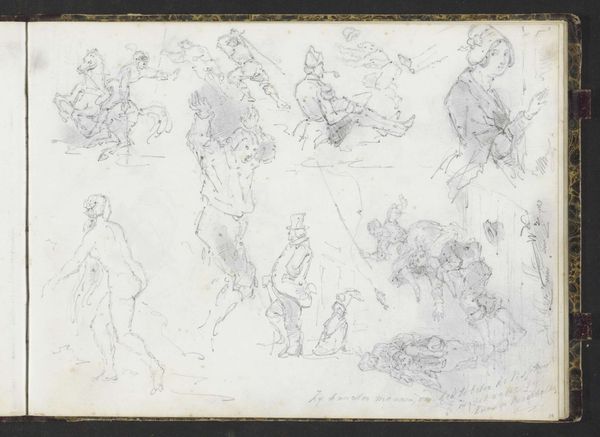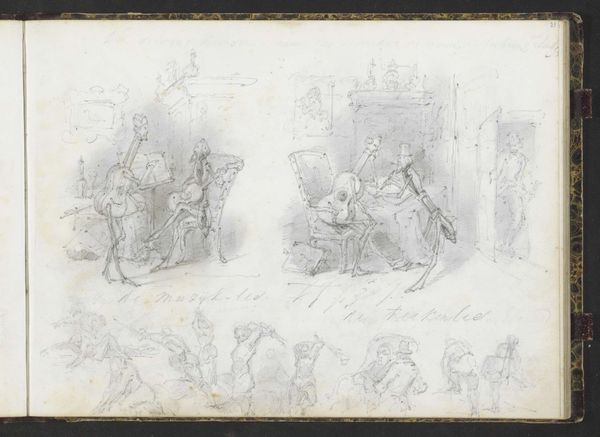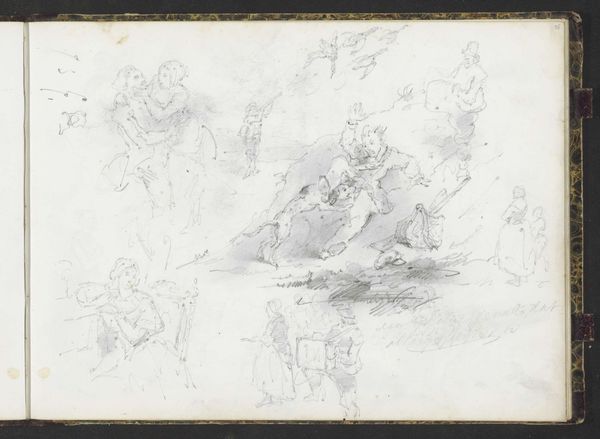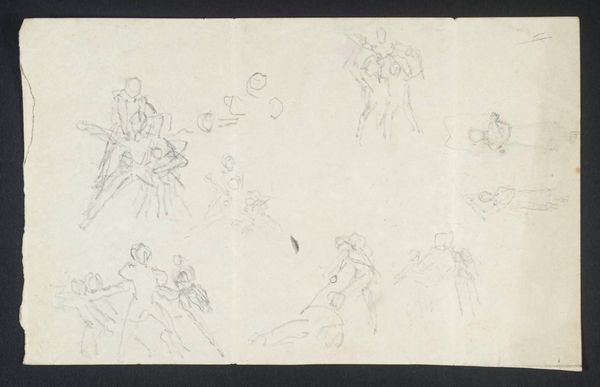
Studieblad met figuren in historisch kostuum, honden en een lezende man 1839 - 1894
0:00
0:00
drawing, pencil
#
drawing
#
dog
#
landscape
#
figuration
#
pencil
#
genre-painting
#
history-painting
#
academic-art
Copyright: Rijks Museum: Open Domain
Editor: This drawing, "Studieblad met figuren in historisch kostuum, honden en een lezende man" by Lambertus Lingeman, made with pencil sometime between 1839 and 1894, feels like a glimpse into a theatrical costume shop, full of characters and possibilities. What strikes you when you look at it? Curator: I see a fascinating intersection between historical documentation and social commentary. Consider the figures themselves – are they merely studies of costume, or do they represent types within Dutch society at the time? What does the inclusion of animals – especially the dogs – say about societal values and hierarchies? And what about that single ‘lezende man,’ the reading man – what are *they* reading? Editor: That’s a really interesting way to look at it. I was so focused on the figures themselves that I missed those layers of meaning. So you're saying it's not just a sketchbook page, but a reflection of 19th-century Dutch culture? Curator: Exactly! Think about academic art during that period: history painting and genre scenes. Lingeman, through what appears as casual studies, hints at these grander narratives, yet he fragments them, leaving it up to us to fill in the blanks. What assumptions are you making when *you* see historical figures, particularly men and women of various statures? Editor: That’s something to think about! Seeing it now, through the lens of those power dynamics gives each little sketch a lot more weight. What does the prominence of these historical figures really *mean*, especially in this context, where it appears the *artist* had the power? Curator: And let’s not ignore the "genre-painting" or "history-painting" themes. Aren’t both inherently political? How does art celebrate a vision of who society expects us to be or how it idealizes the past, and what's deliberately or unknowingly being left out of this representation? It’s about understanding the narrative being constructed and whose voices are amplified, while seeing if those very dynamics shift when we, as contemporary audiences, reclaim the artwork today. Editor: Wow, I’ll definitely look at sketchbooks differently from now on. It is almost like the artist created a series of prompts rather than completed images.
Comments
No comments
Be the first to comment and join the conversation on the ultimate creative platform.
